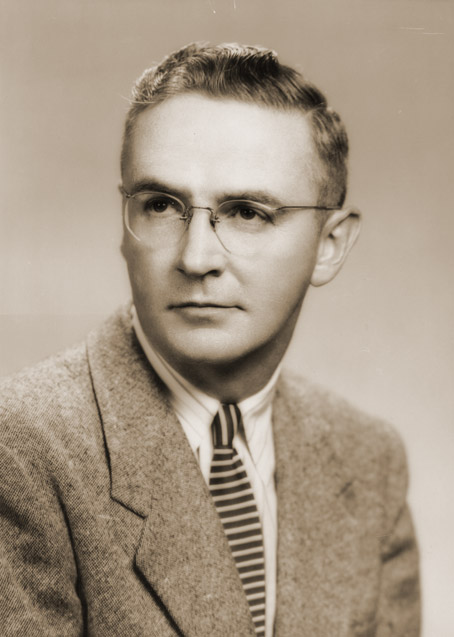Jean Paul Mather Papers

Jean Paul Mather was the youngest president in his era to lead a land-grant university. He joined the University of Massachusetts in 1953 as Provost, and was appointed President in 1954, at the age of 39. During his tenure, he oversaw major academic restructuring and advocated fiscal autonomy for the University, struggling with state officials to raise salaries for the faculty. His work is credited with building a foundation for the academic strength of the University. Mather left UMass in 1960 to assume the Presidency of the American College Testing Program, and he later became President of the University City Science Center in Philadelphia from 1964 to 1969. In 1969, Mather returned to his alma mater, the Colorado School of Mines, to become head of the mineral economic department.
Correspondence, memos, speeches, reports, biographical material, clippings, memorabilia, photographs and other papers, relating chiefly to Mather’s work as President, University of Massachusetts. Includes material relating to the Freedom Bill (granting the university autonomy in personnel matters), establishment of an exchange program with Hokkaido University, Japan, and Mather’s inauguration (including minutes of the Committee on Inauguration).
Background on Jean Paul Mather
Jean Paul Mather was the University’s youngest and one if its most active and transformative Presidents. Mather’s era, 1953-1960, set the stage for dramatic changes to the structure, size, and role of UMass. His drive to heighten the significance of the public university by bringing about these changes also made Mather one of the university’s most controversial presidents.
Mather was born on Dec. 11, 1914 in Del Norte, Colorado to John B. and Leona Mather, both educators. He attended the Colorado School of Mines from 1932-1935 and the University of Denver from 1936 to 1937 before graduate study in economics at the University of Chicago in 1939. After teaching economics at the Colorado School of Mines from 1938 to 1943, Mather entered the Navy as an ensign attached to the V-12 training program and later as a Flag Lieutenant to Read Admiral James Holloway.
With the war’s end, Mather resumed his career in education, returning to Colorado to teach at the University of Denver, completing an MBA there in 1948, and then lecturing in statistics and accounting at the Woodrow Wilson School at Princeton for three years.
Mather was working as a staff associate with the American Council on Education when he became the University’s first Provost in 1953. Within months of his appointment, President Ralph Van Meter took ill. At 38, Mather carried out the duties of the presidency, officially taking the helm when Van Meter retired the next year. During Mather’s tenure, the university embarked on an ambitious course of expansion, involving major academic restructuring. In his inaugural speech, Mather called for increasing enrollment to 10,000 within a decade to accommodate “a tidal wave of youngsters coming up through the elementary and secondary schools of Massachusetts.” He oversaw the formation of the College of Arts and Sciences from the merger of the School of Science and School of Art, the development of the Schools of Education and Nursing, and the formation of the Faculty Senate. The physical environment of campus evolved nearly as rapidly, with the addition of new buildings including the Morrill Science Center, Bartlett and Machmer Halls, and the Student Union, as well as renovation of the Durfee Conservatory.
Mather struggled with state officials to gain fiscal and administrative autonomy for the University. Through intense lobbying efforts, he won approval of a “freedom bill” in 1956 that granted the university authority to hire new faculty and staff without state approval. His efforts resulted too in passage of an $11 million dollar bond for the construction of new dormitories and $26 million in appropriations for new classrooms and equipment. By 1959, enrollment rose from approximately 4,000 to 6,000 students.
A student of the University’s history, Mather, inspired by his predecessor William S. Clark, rekindled the partnership between UMass and Hokkaido University in Sapporo Japan. Founded by Clark in 1876, Hokkaido University hosted Mather in 1956 and the two Universities developed a formal exchange program that lasted for several years.
Mather resigned in 1960. The University met his goal of 10,000 students by 1965 and Mather’s six-year presidency is credited with building the foundation for the academic strength of the University. After leaving UMass, Mather became the President of the American College Testing Program. He later oversaw the Purdue University Research Foundation (1962-1965), was President of the University City Science Center in Philadelphia (1964-1969), and was head of the mineral economic department at the Colorado School of Mines (1969-1980).
He has received honorary degrees from American International College, Amherst College, Northeastern University, The University of Rhode Island, Hokkaido University of Japan, Lowell Tech, and Lesley College.
Mather died on June 21, 2007 and is buried in the Wildwood Cemetery in Amherst.
The Jean Paul Mather Papers include correspondence, memos, speeches, reports, biographical material, clippings, memorabilia, photographs and other papers, relating chiefly to Mather’s work as President, University of Massachusetts. Of great significance is material relating to the Freedom Bill (granting the university autonomy in personnel matters), establishment of an exchange program with Hokkaido University, Japan, and Mather’s inauguration (including minutes of the Committee on Inauguration). The collection also includes some of Mather’s work before and after his time as President.
Acquired from Barbara Johnson, 2013.
Processed by Emily Braun, 2014.
Cite as: Jean Paul Mather Papers (RG 3/1/M38). Special Collections and University Archives, University of Massachusetts
Amherst Libraries.
